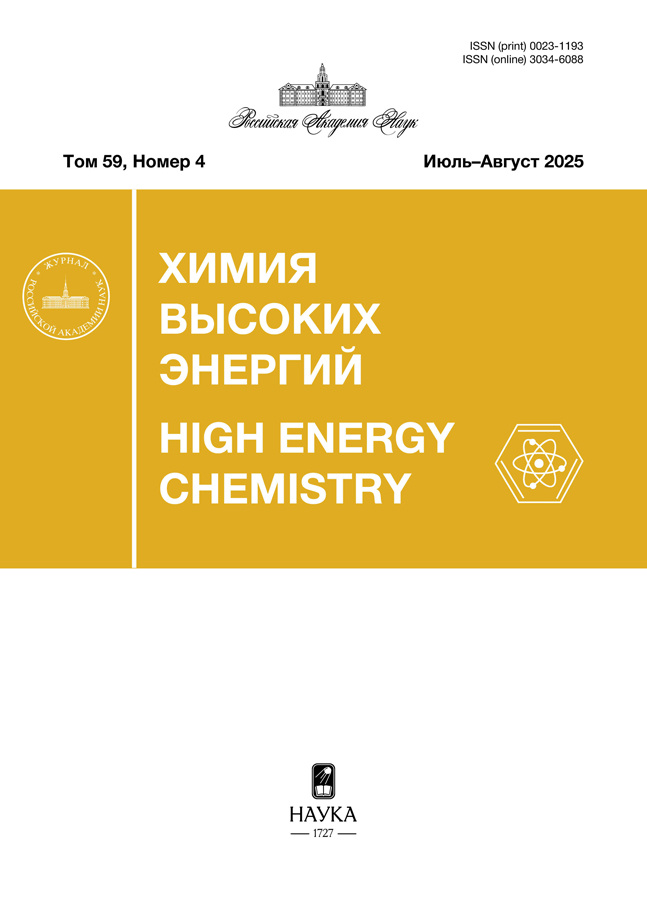Carbon dioxide reforming of methane in a dc glow discharge at atmospheric pressure
- Authors: Batukaev T.S.1, Lebedev Y.A.1
-
Affiliations:
- Topchiev Institute of Petrochemical Synthesis of the RAS
- Issue: Vol 59, No 4 (2025)
- Pages: 291–296
- Section: PLASMA CHEMISTRY
- URL: https://manmiljournal.ru/0023-1193/article/view/687757
- DOI: https://doi.org/10.31857/S0023119325040147
- EDN: https://elibrary.ru/ayupga
- ID: 687757
Cite item
Abstract
A DC discharge in a mixture of CO2 and CH4 at atmospheric pressure was studied at different ratios of CO2 and CH4 at the input and different polarities of the applied voltage. It was shown that when the cathode is located in the region of gas supply to the discharge at a gas flow rate ratio at the input of CO2/CH4 = 1, sparking of the discharge is observed in the discharge, which is associated with the intense formation of a solid phase from carbon-containing particles. The degree of decomposition of CH4 is about 95%, and the degree of decomposition of CO2 is within 85–95% and decreases with increasing concentration of CO2 in the mixture. The ratio of concentrations of H2 and CO at the discharge output can be controlled by the ratio of consumption of CO2 and CH4 at the discharge input.
Full Text
About the authors
T. S. Batukaev
Topchiev Institute of Petrochemical Synthesis of the RAS
Email: lebedev@ips.ac.ru
Russian Federation, Moscow
Yu. A. Lebedev
Topchiev Institute of Petrochemical Synthesis of the RAS
Author for correspondence.
Email: lebedev@ips.ac.ru
Russian Federation, Moscow
References
- Snoeckx R., Bogaerts A. // Chem. Soc. Rev. 2017. 46. 5805.
- George A., Shen B., Craven M. et al. // Renewable and Sustainable Energy Reviews. 2021. V. 135. P. 109702.
- Trenchev G., Nikiforov A., Wang W. et al. // Chemical Engineering Journal. 2019. V. 362. P. 830–841.
- Bongers W., Bouwmeester H., Wolf B. et al. // Plasma Process Polym. 2017. V. 14. № 6. P. 1600126.
- Liu C.J., Xu G.H., Wang T. // Fuel Processing Technology. 1999. V. 58. № 2-3. P. 119–134.
- Pacheco J., Soria G., Pacheco M. et al. // International journal of hydrogen energy. 2015. V. 40. № 48. P. 17165–17171.
- Ikeda A., Hunge Y.M., Teshima K. et al. // Energy Fuels. 2024. V. 38. P. 11918–11926.
- Batukaev T.S., Bilera I.V., Krashevskaya G.V., et al. // Plasma. 2023. V. 6. P. 115–126.
- Deminsky M., Jivotov V., Potapkin B., Rusanov V. // Pure Appl. Chem. 2002. V. 74. № 3. P. 413–418.
- Бабарицкий А.И., Баранов Е.И., Демкин С.А. и др. // Химия Высоких Энергий. 1999. T. 33. № 6. C. 458–463.
- Животов В.К., Потапкин Б.В., Русанов В.Д. Энциклопедия низкотемпературной плазмы, Тематический том VIII–1 Химия / Под ред. Лебедева Ю.А., Платэ Н.А., Фортова В.Е. М.: Янус-К, 2005. 4–36 с.
- Amin M.H. // Progress Petrochem. Sci. 2018. V. 2. № 2. P. 161–165.
- Usman M., Daud W.W., Abbas H.F. // Renewable and Sustainable Energy Reviews. 2015. V. 45. P. 710–744.
- Abiev R.Sh., Sladkovskiy D.A., Semikin K.V. et al. // Catalysts. 2020. V. 10. P. 1358.
- De Vasconcelos B.R., Lavoie J.M. // Int. J. of Energy Prod. & Mgmt. 2018. V. 3. P. 44.
- Курина Л.Н., Аркатова Л.А., Харламова Т.С. и др. // Успехи современного естествознания. 2006. № 4. С. 55.
- Hussien A.G.S., Polychronopoulou K. // Nanomaterials. 2022. V. 12. P. 3400.
- Muraza O., Galadima A. // Int. J. Energy Res. 2015. V. 39. P. 1196–1216.
Supplementary files













